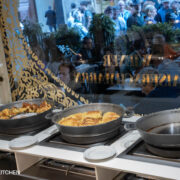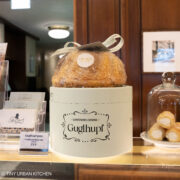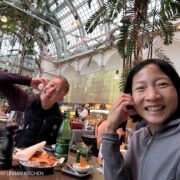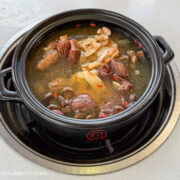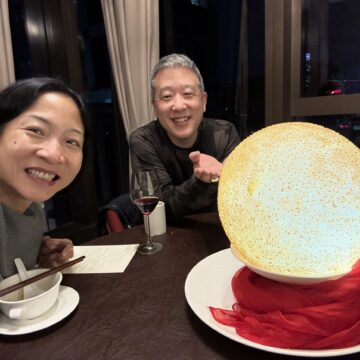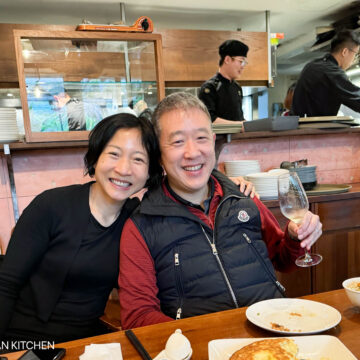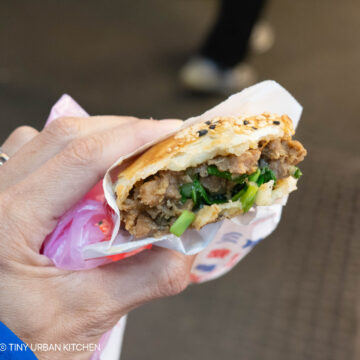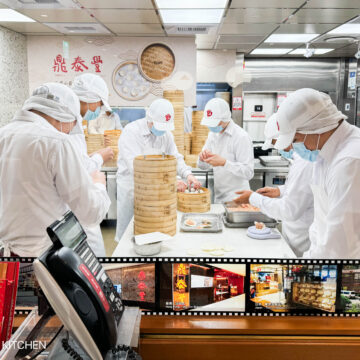
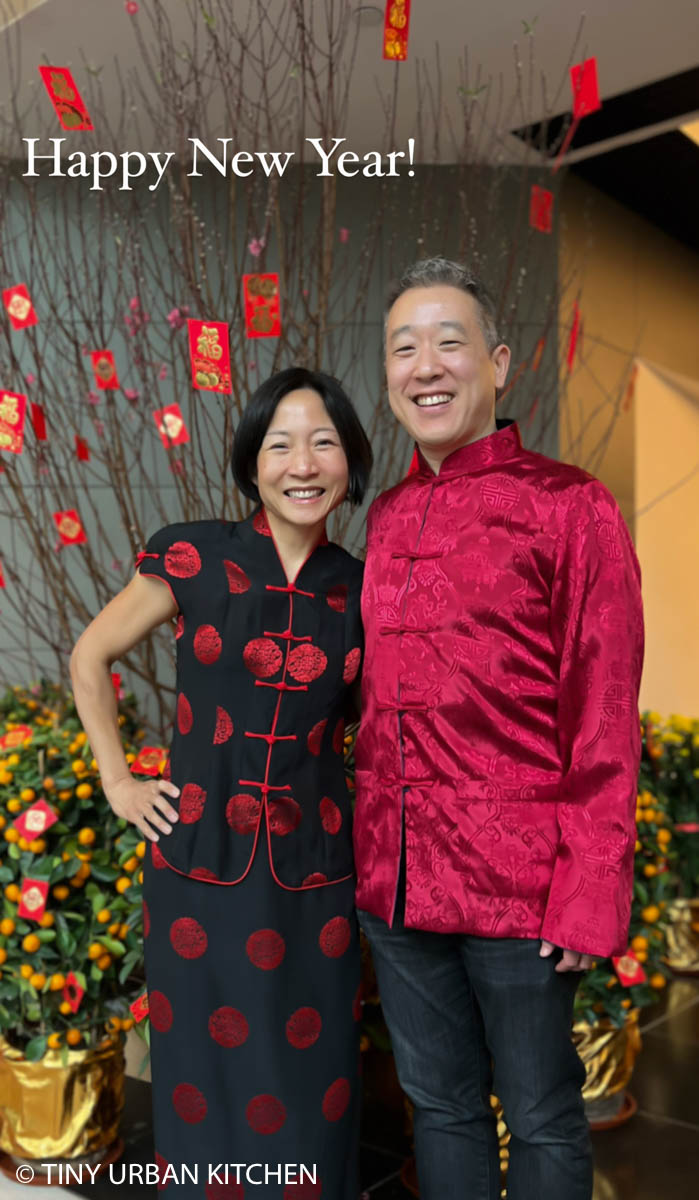
Happy Year of the Tiger!
恭喜發財!The Lunar New Year is one of the biggest holidays in China. During normal, non-Covid times, everyone make the long journey back to their hometowns to see their family. This is the time when relatives gather together to enjoy numerous massive meals. Parents bug their single children about getting married, and nudge newly married couples to have children. Here in Hong Kong, the culture of handing out red envelopes, called "laisee", is ubiquitous. Always make sure to carry a couple envelopes in your bag, just in case you run into service people, kids, or others to whom you should give a pocket of blessing.
This year, for the first time, we decided to go all out, embracing the local traditions. We hosted a traditional Chinese New Year dinner. We invited friends who were "family-less", unable to go home for the holidays due to long, burdensome, and restrictive quarantine requirements.
Decorating for Lunar New Year
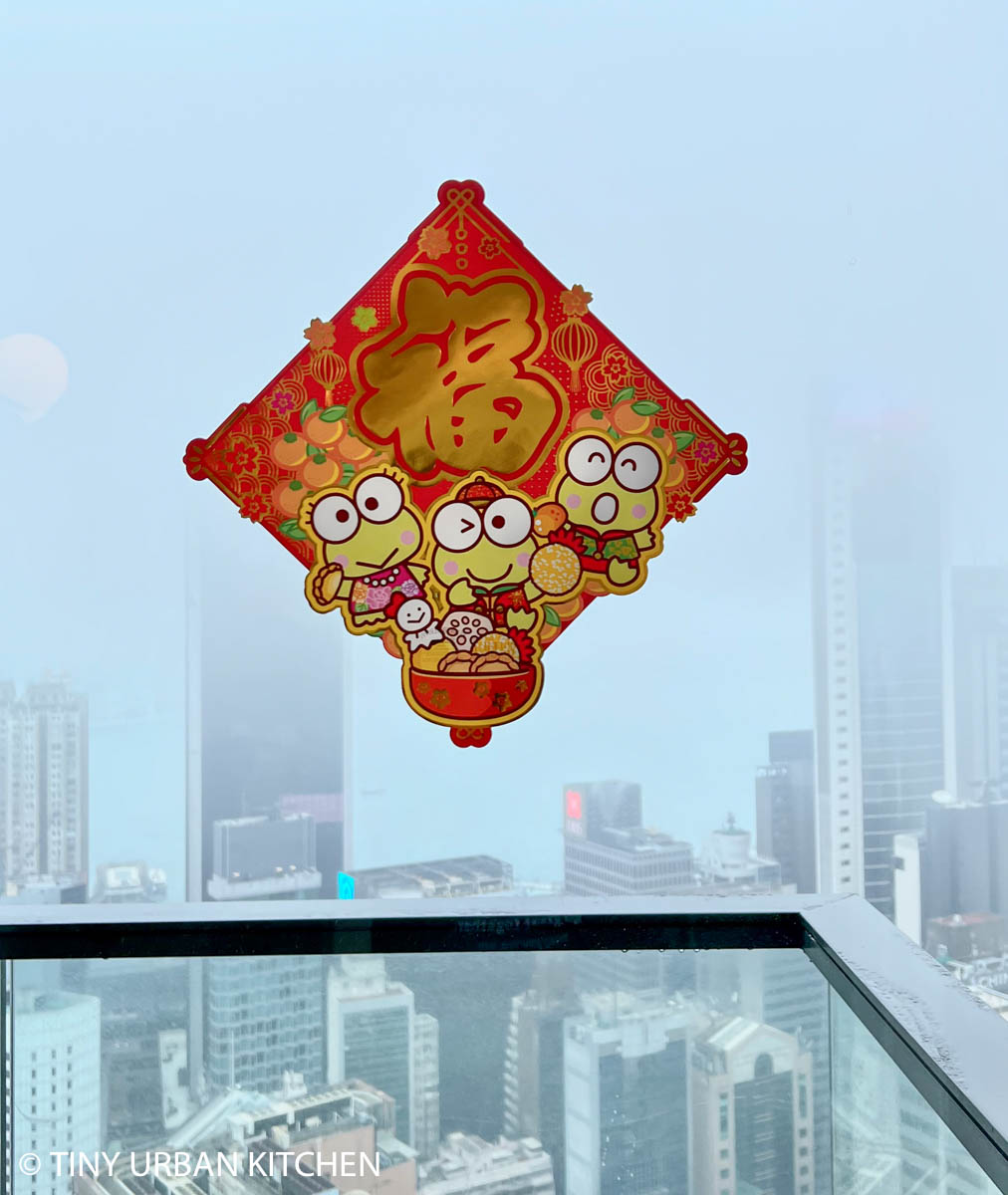
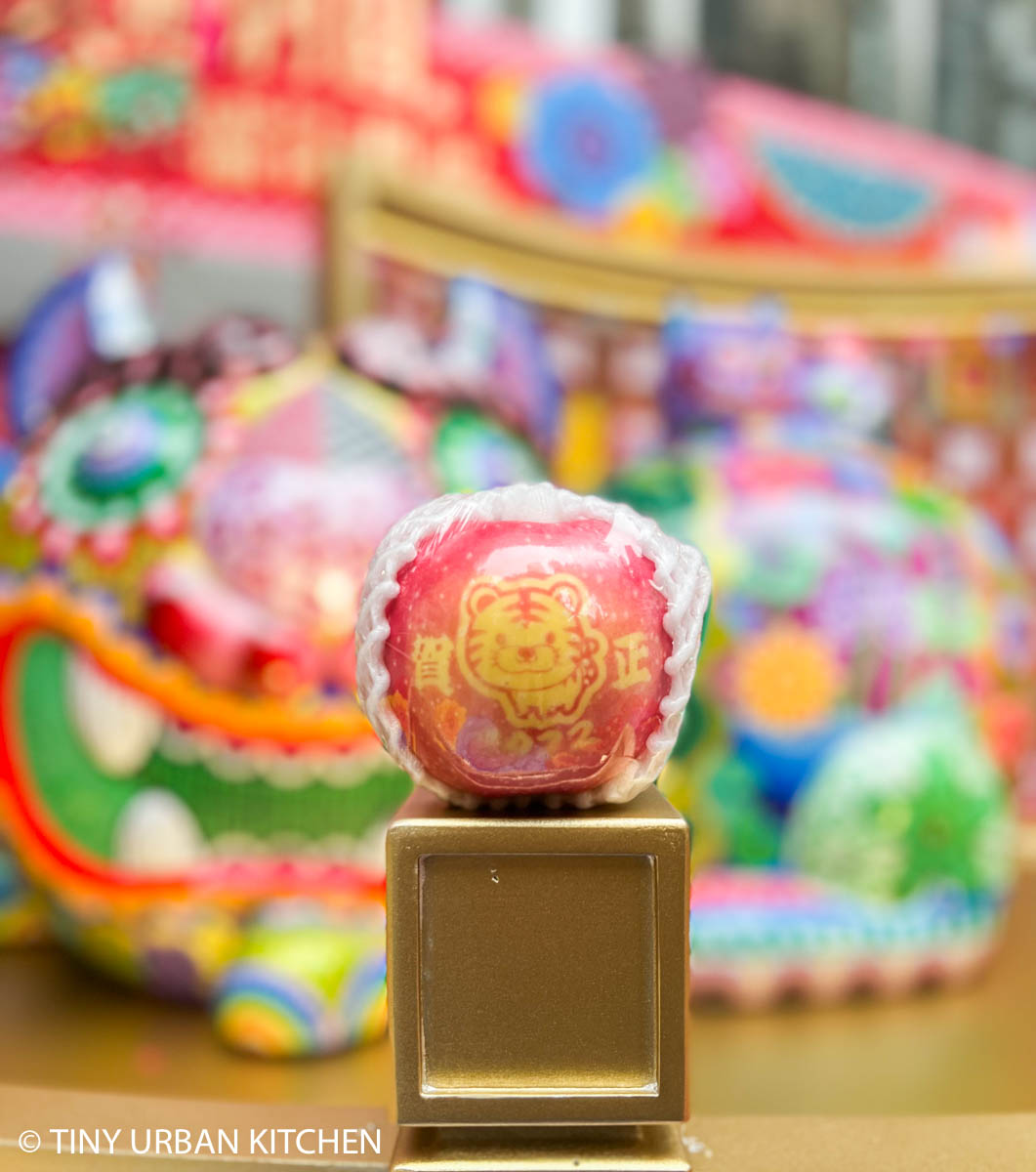
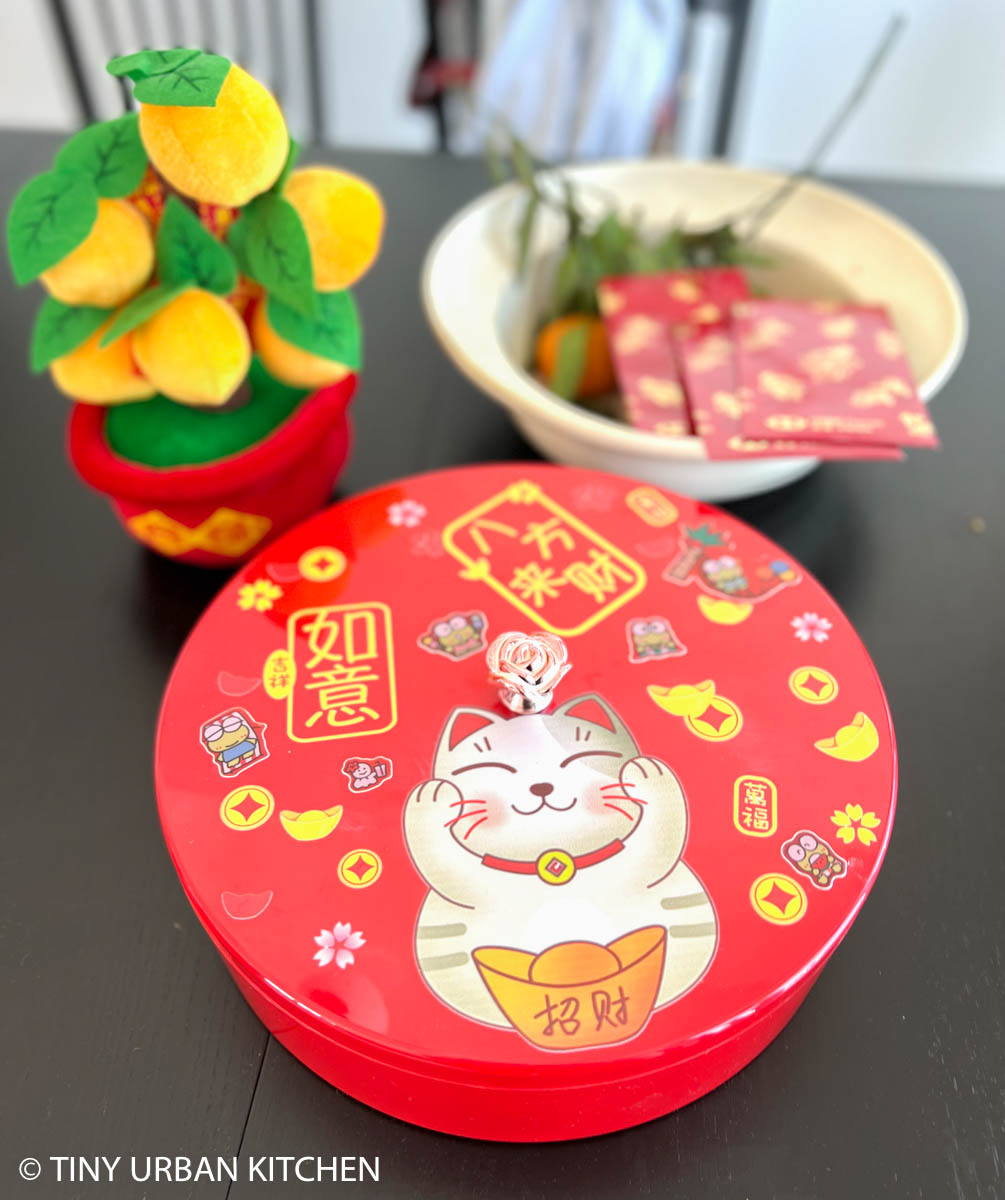
First, we went crazy with the decorations. I went to the local outside market and picked up various beautiful paper-cuttings, cute door signs, plush oranges, and a traditional candy tray.
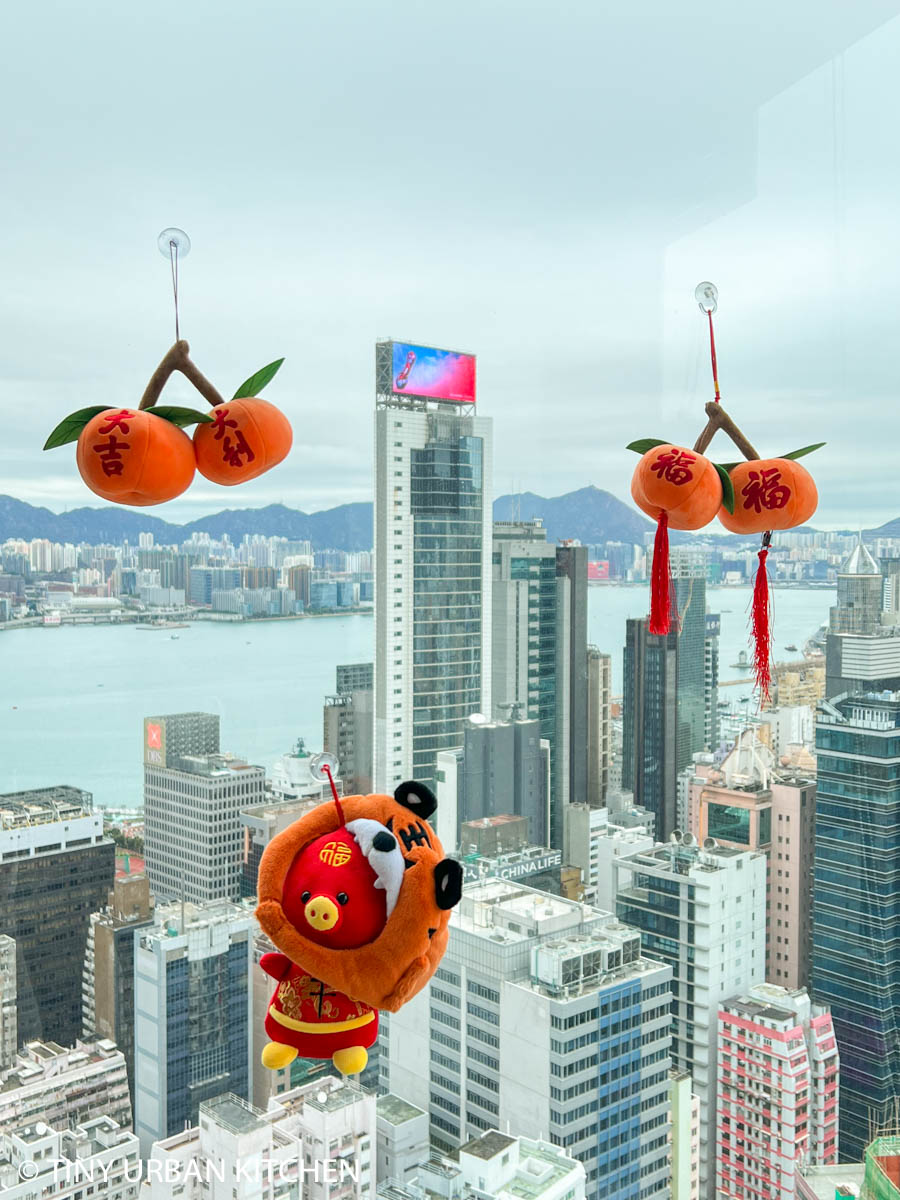
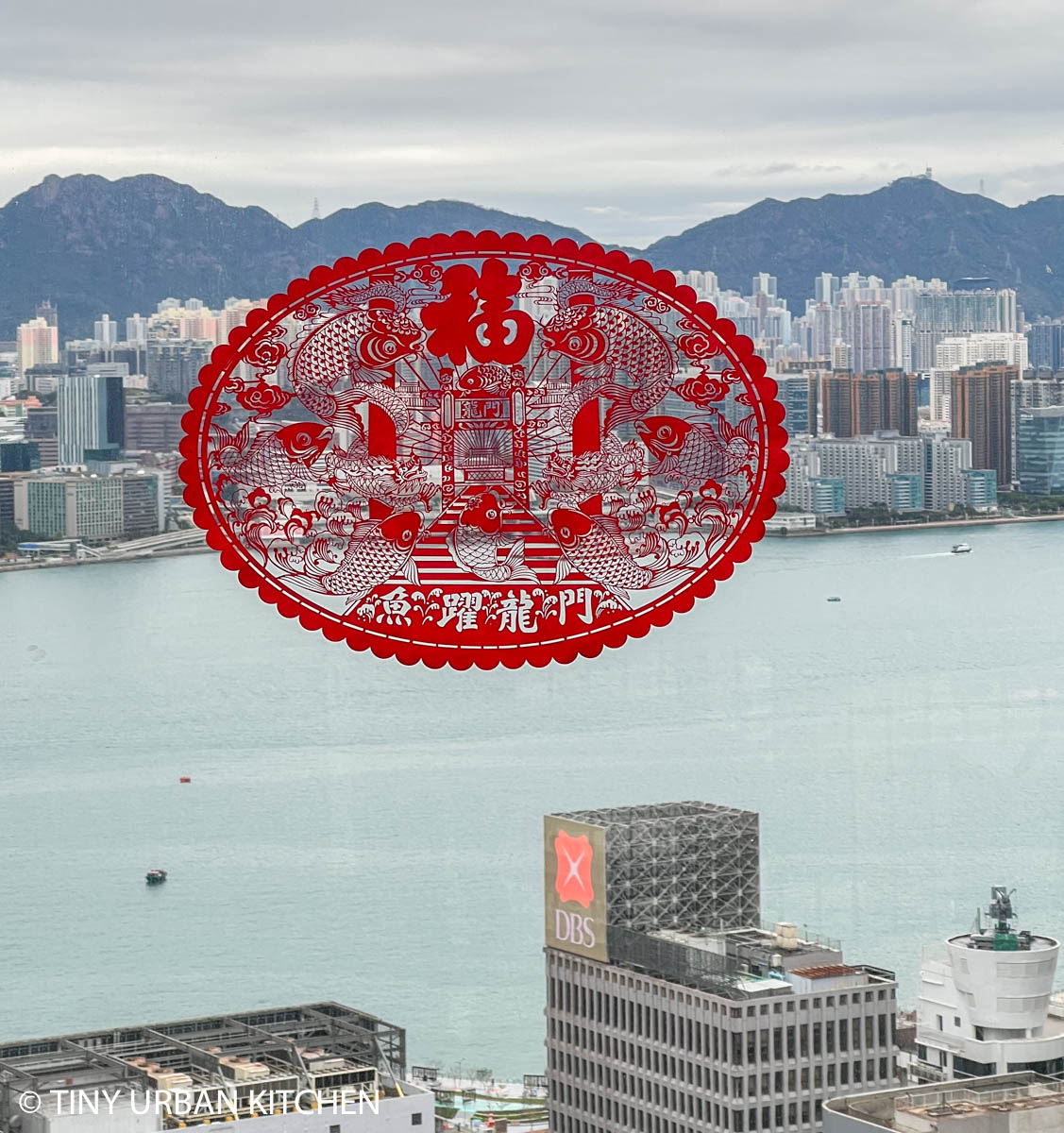
An Authentic Lunar New Year Meal
We asked our Chinese teacher for tips on what to have for New Years Eve, also called 除夕夜. She began to tell us about how her family celebrates the New Year.
Round or Spherical Foods
She told us round or spherical foods symbolized wholeness and perfection. So, I boiled some fish/seafood balls and also prepared a chili lotus root salad.
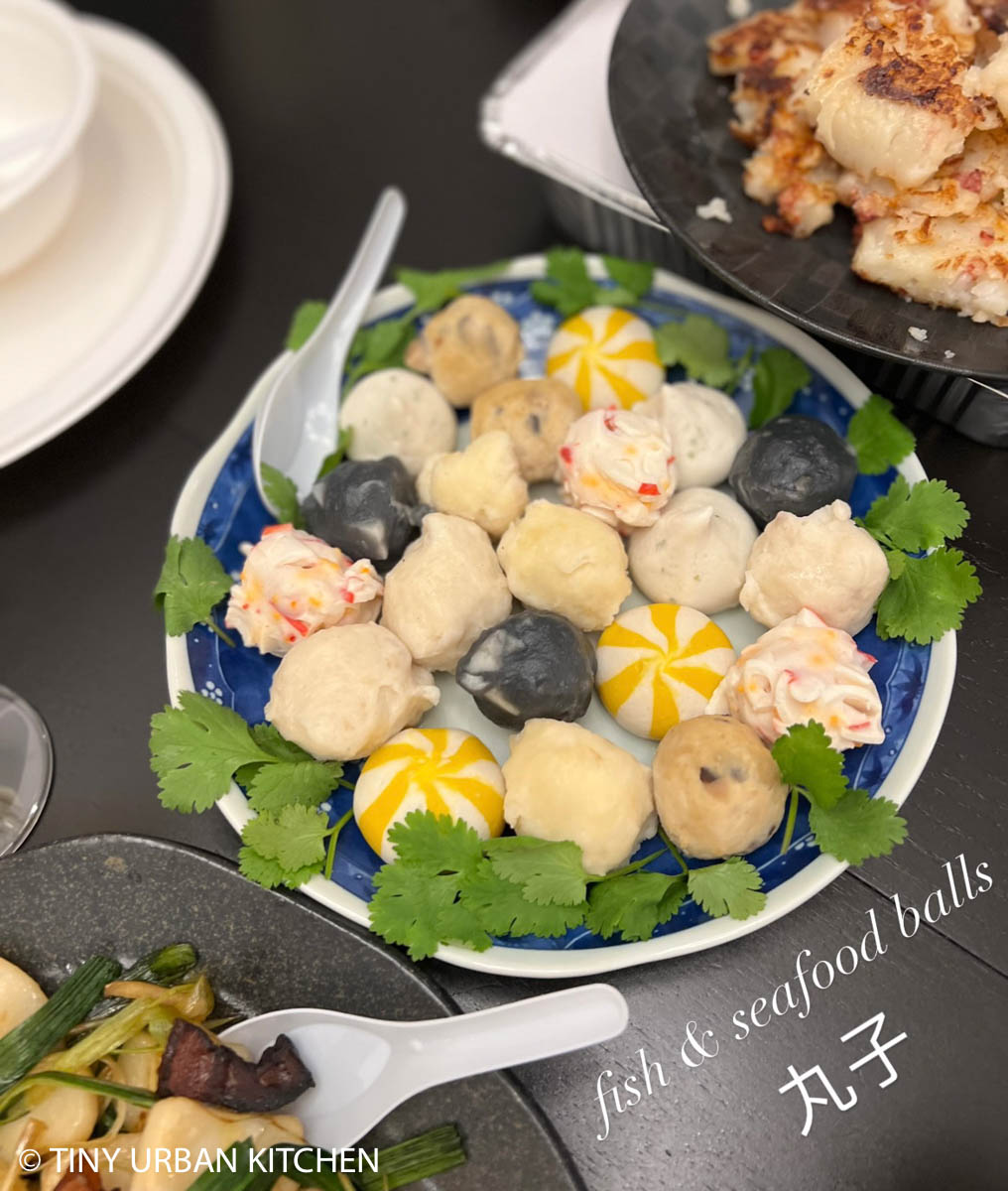
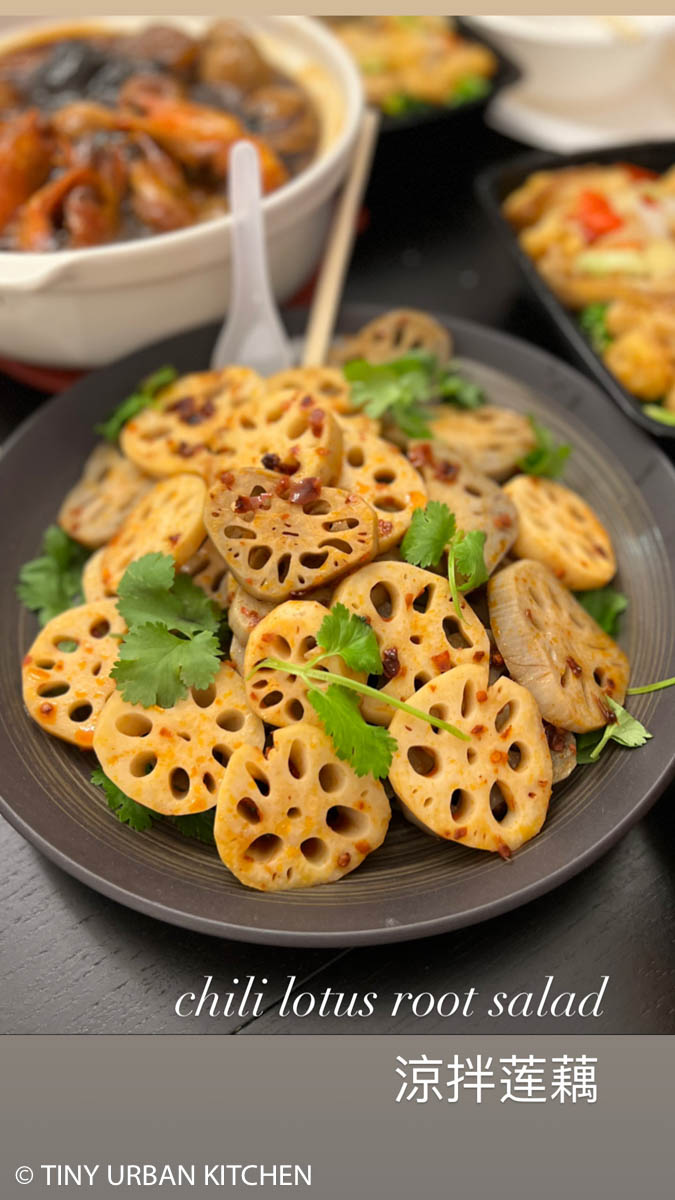
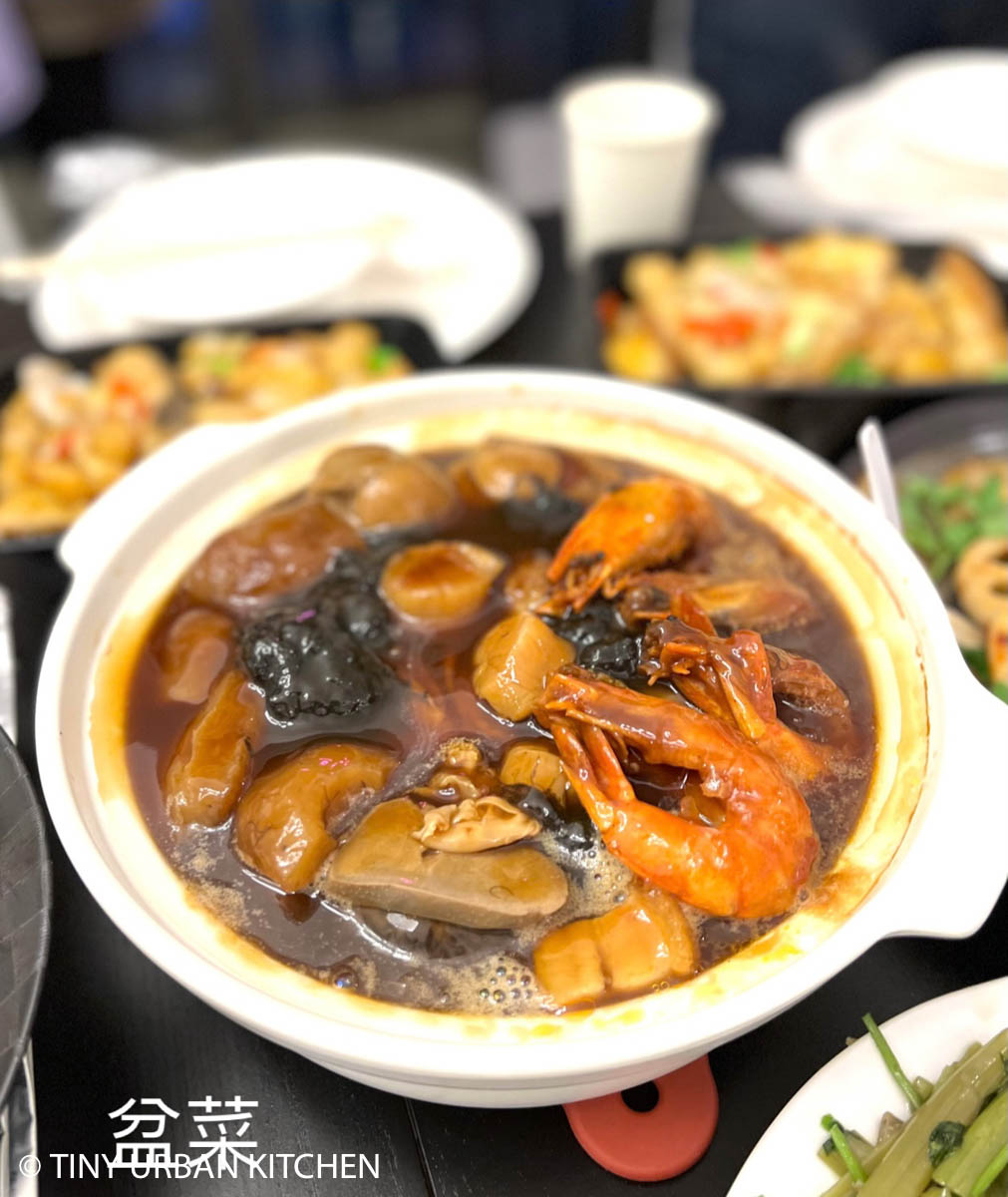
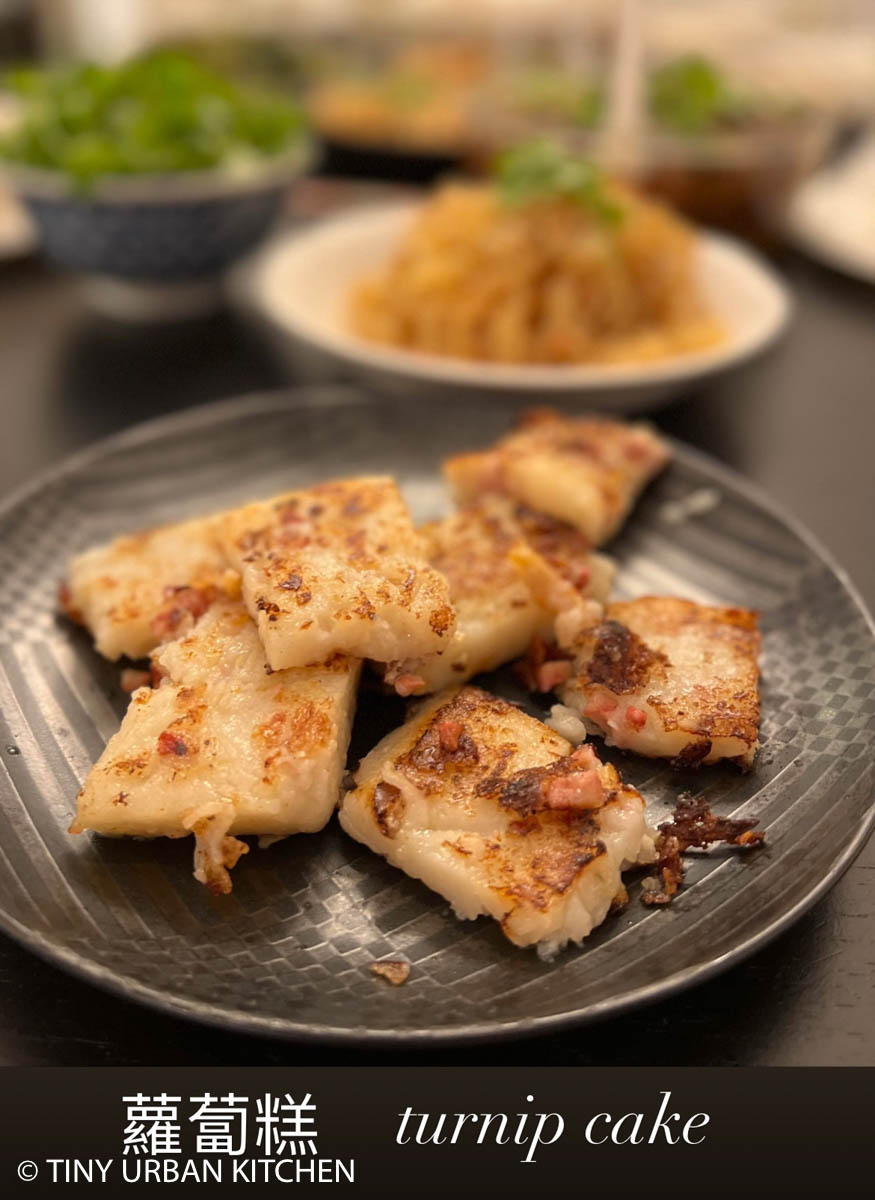
We ordered a Poon Choi 盆菜, a very local Hong Kong specific dish that arose from the villages in the Hong Kong countryside (aka New Territories). Families make poon choi by filling a large pot with abundant amounts of seafood, meats, and root vegetables. They put the pot under a fire and it is then cooked for a long time, developing rich flavors over time. The thick brown sauce is the intensely flavorful, and truly makes the poon choi special. We ordered ours from Lei Garden. It came with abundant types of seafood and a seaweed called fat choy / fa cai 髮菜, which sounds similar to 發財, or "make a fortune". Gong xi fa cai! 恭喜發財!
My friend also brought a turnip cake 蘿蔔糕, another traditional Chinese dish to eat during the new year. The words for radish in Hokkein or Taiwanese sounds like "cai tou" which also sounds like good fortune. Again, yet another double meaning good luck dish! We pan fried these and they were delicious!
Meat + Fish
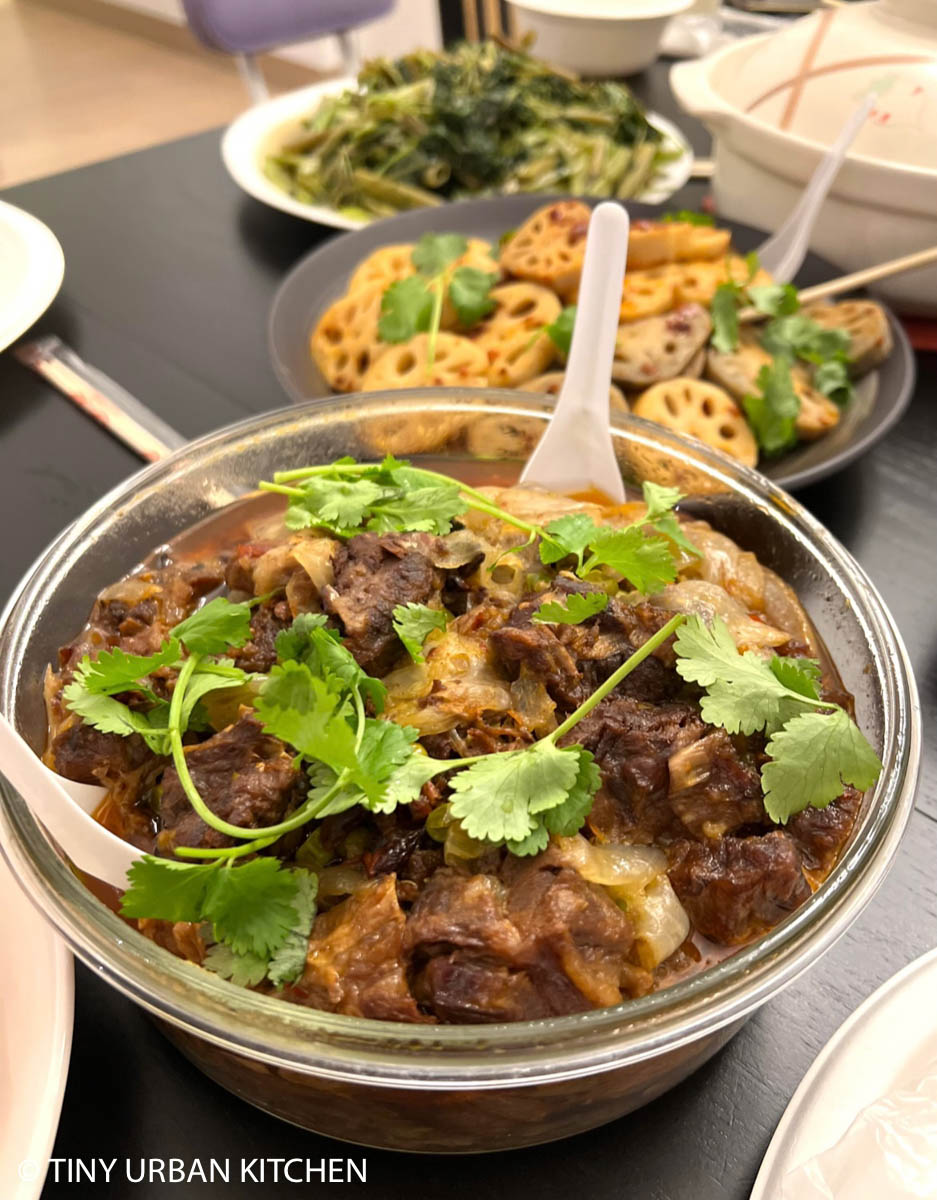
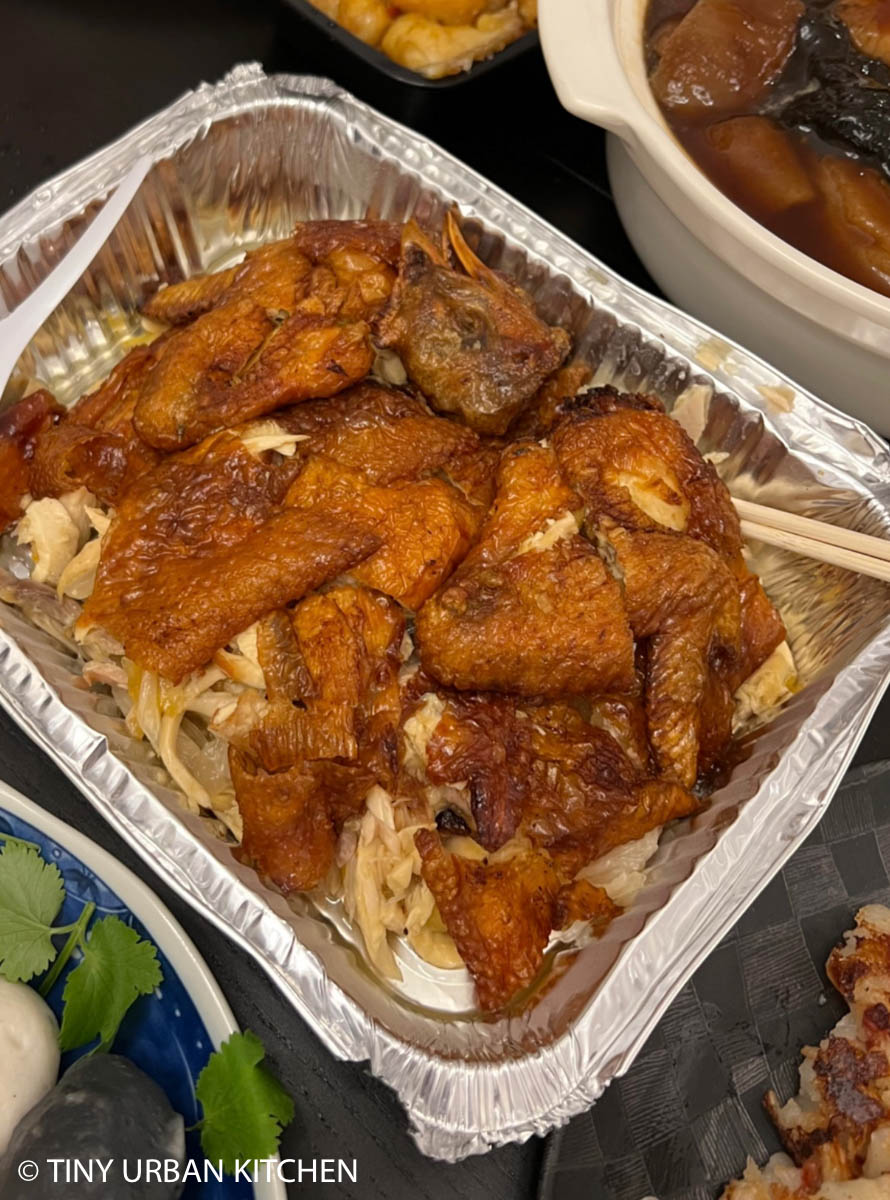
Fish is one of the most important foods to have on the New Years Eve table. The phrase 年年有餘 means "surplus every year". The word for surplus sounds the same as fish, and thus people associate fish with overflowing abundance. We ordered some simple fish from a restaurant (not pictured), just to make sure we fulfilled this important staple of a CNY meal!
Meat is also important. A friend brought a delicious 紅燒肉 (braised beef) and we ordered a whole crispy chicken with grapefruit from a nearby restaurant called The Yuan 原汁原味。
Long Foods and New Year Cake
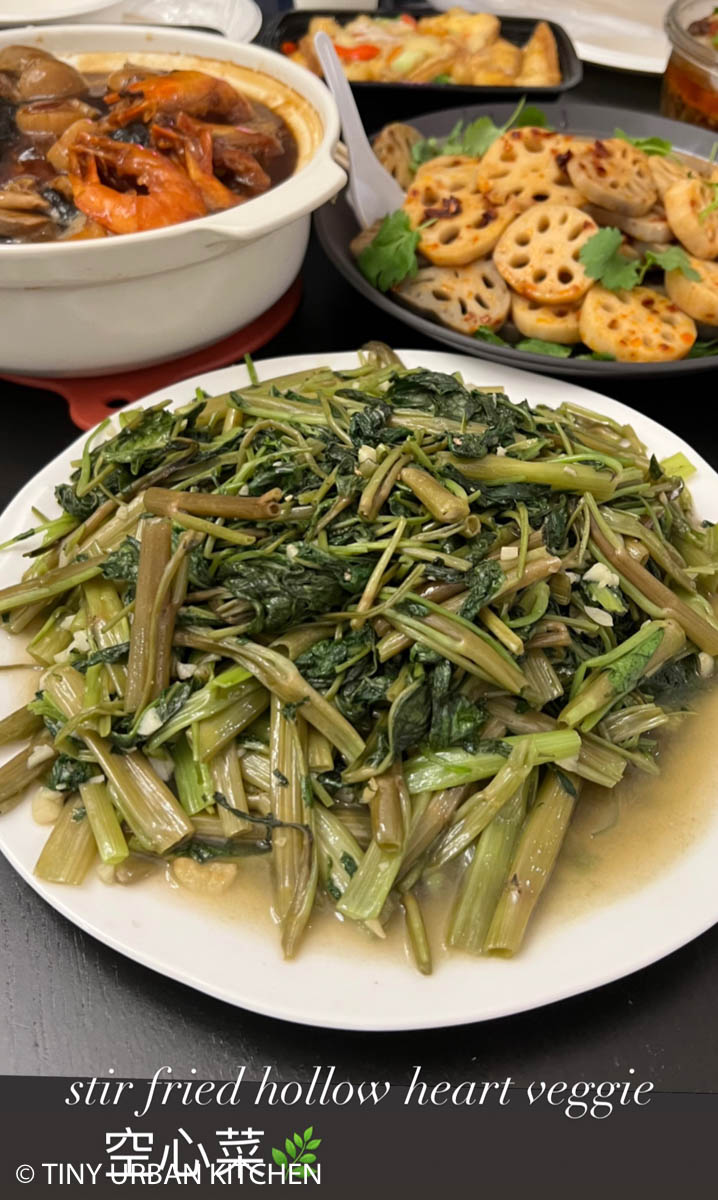
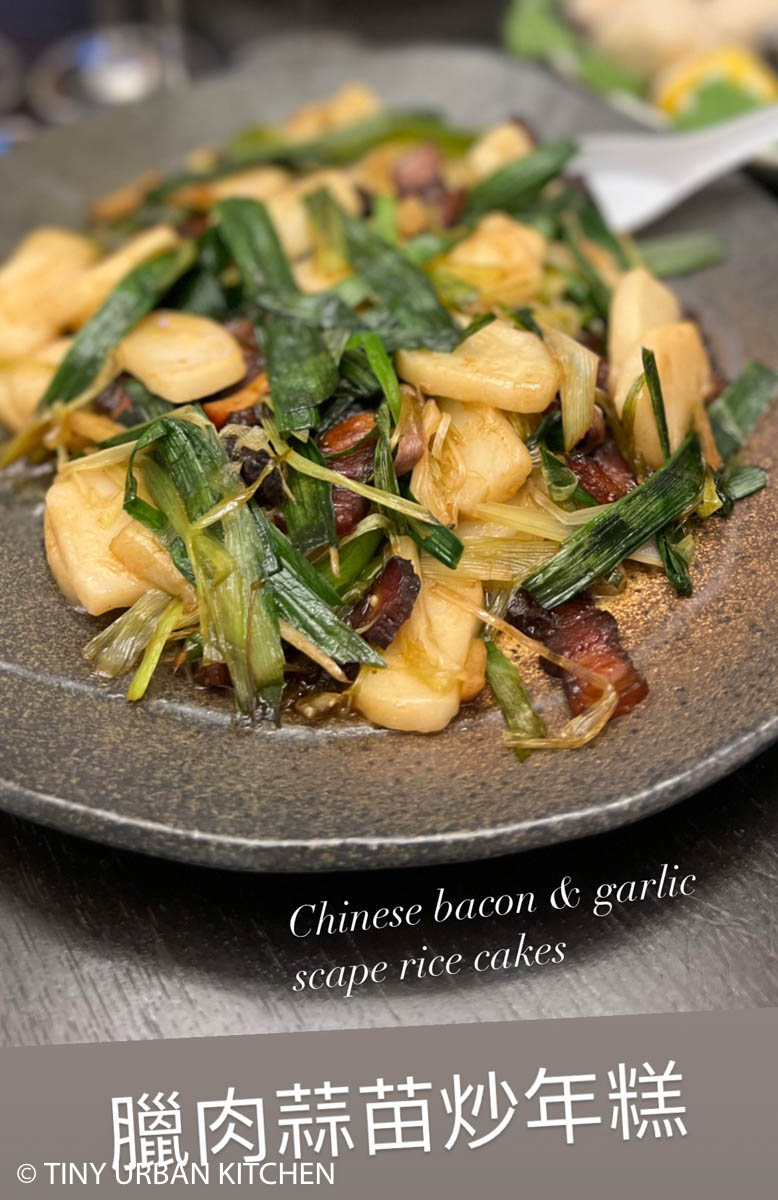
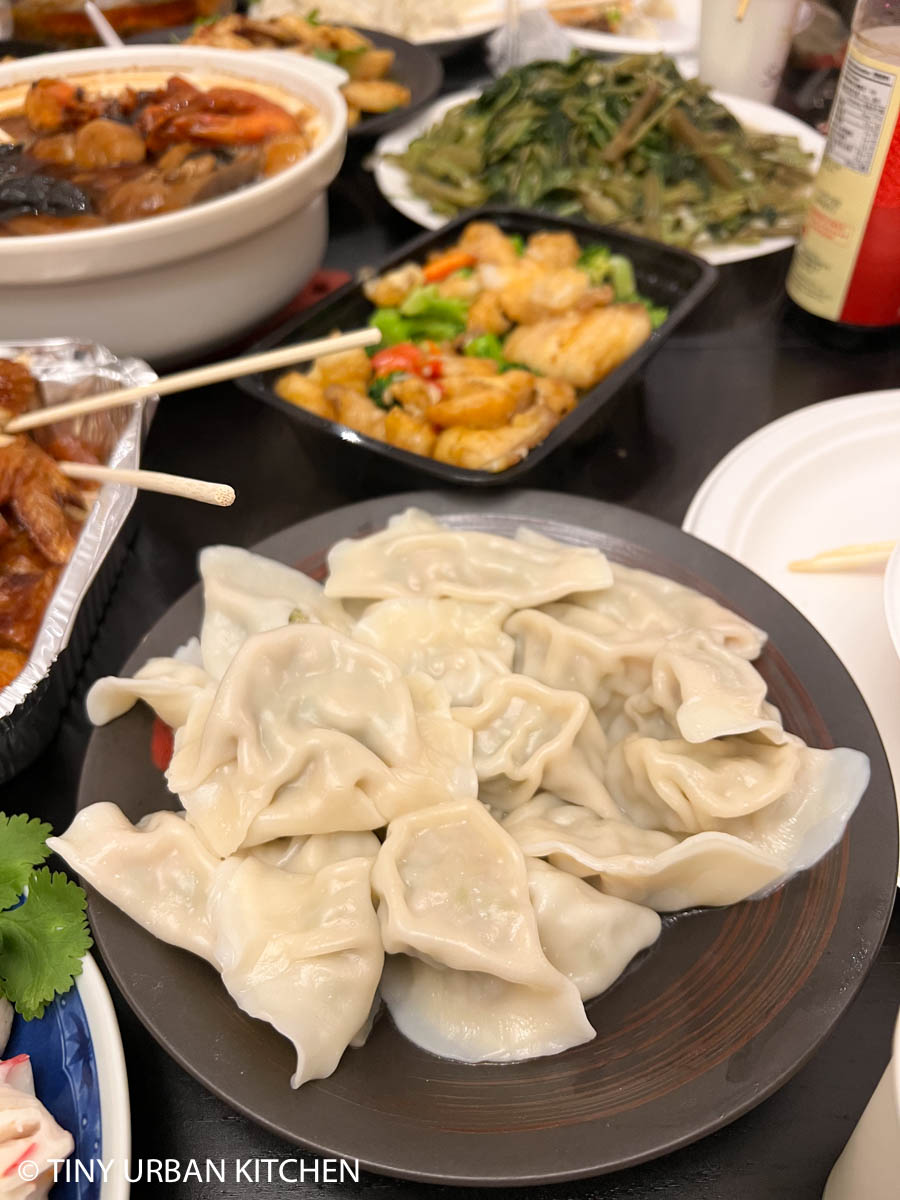
Long foods symbolize long life. I stir fried some hollow heart vegetable (空心菜) which comes with long stems, and also served some marinated jellyfish (also long strands!). A friend originally from northern China brought dumpling skins and filling, and we wrapped dumplings by hand.
Finally, I stir fried some rice cakes with garlic scapes and Chinese bacon (臘肉蒜苗炒年糕). The word for rice cakes (niangao) 年糕 sounds like 年高, meaning "higher by the year". This could be wealth, business growth, health, prosperity, or more!
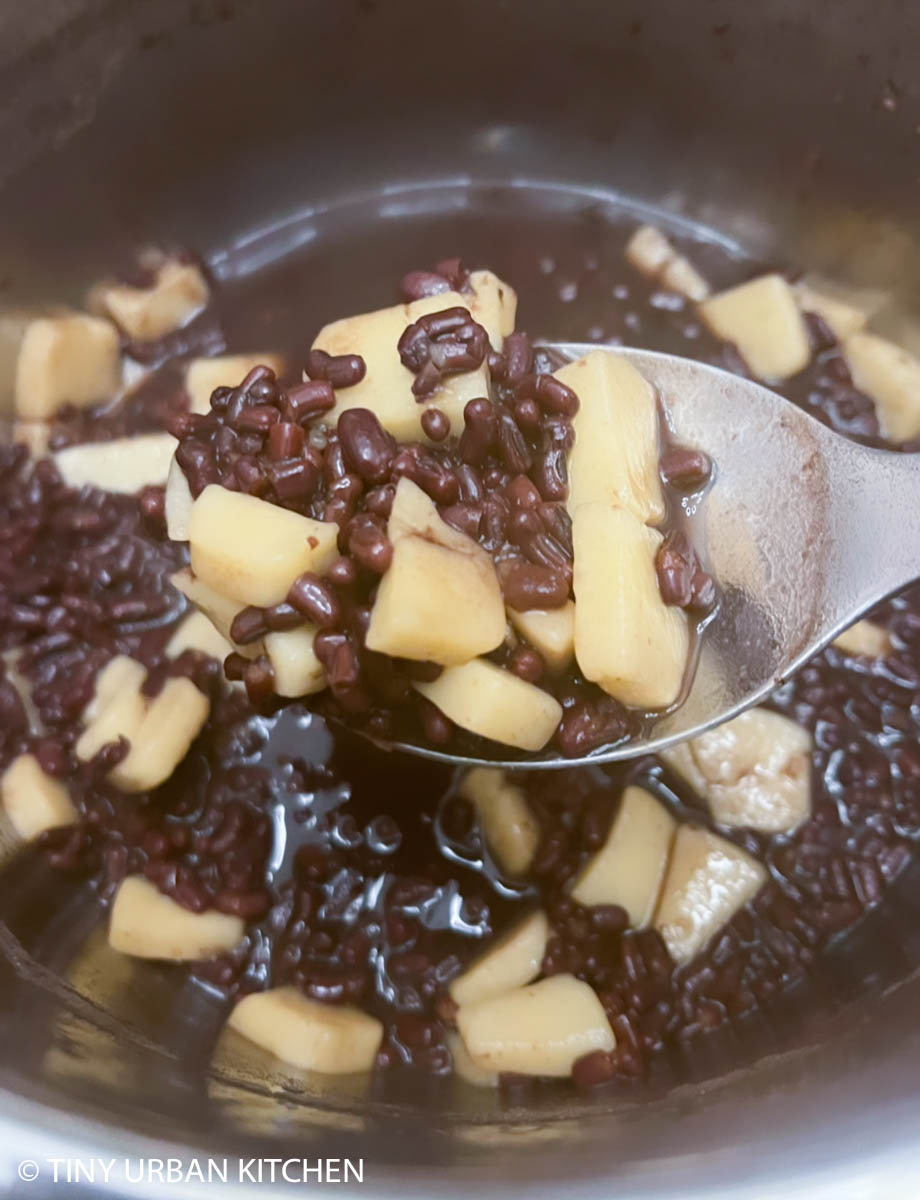
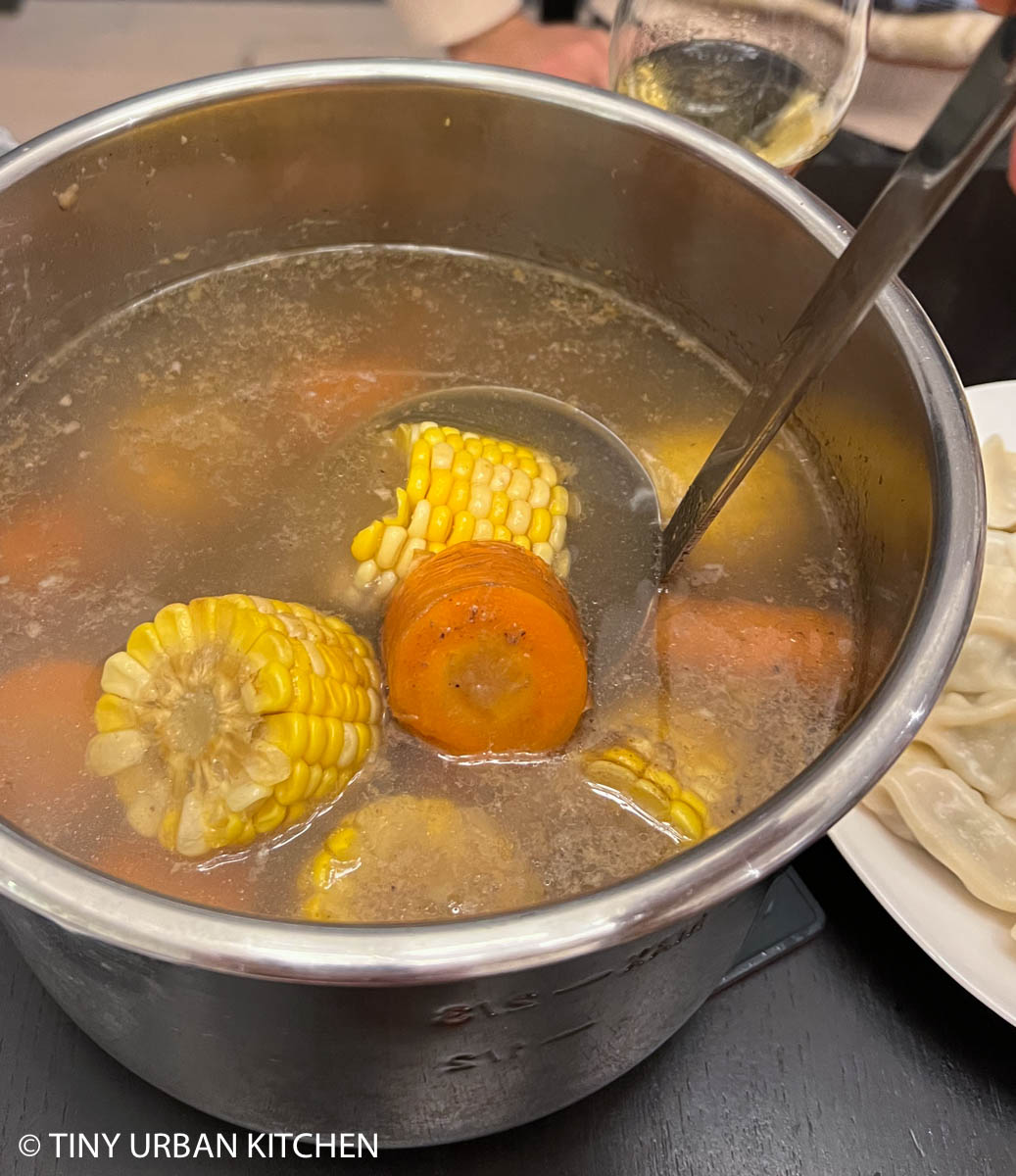
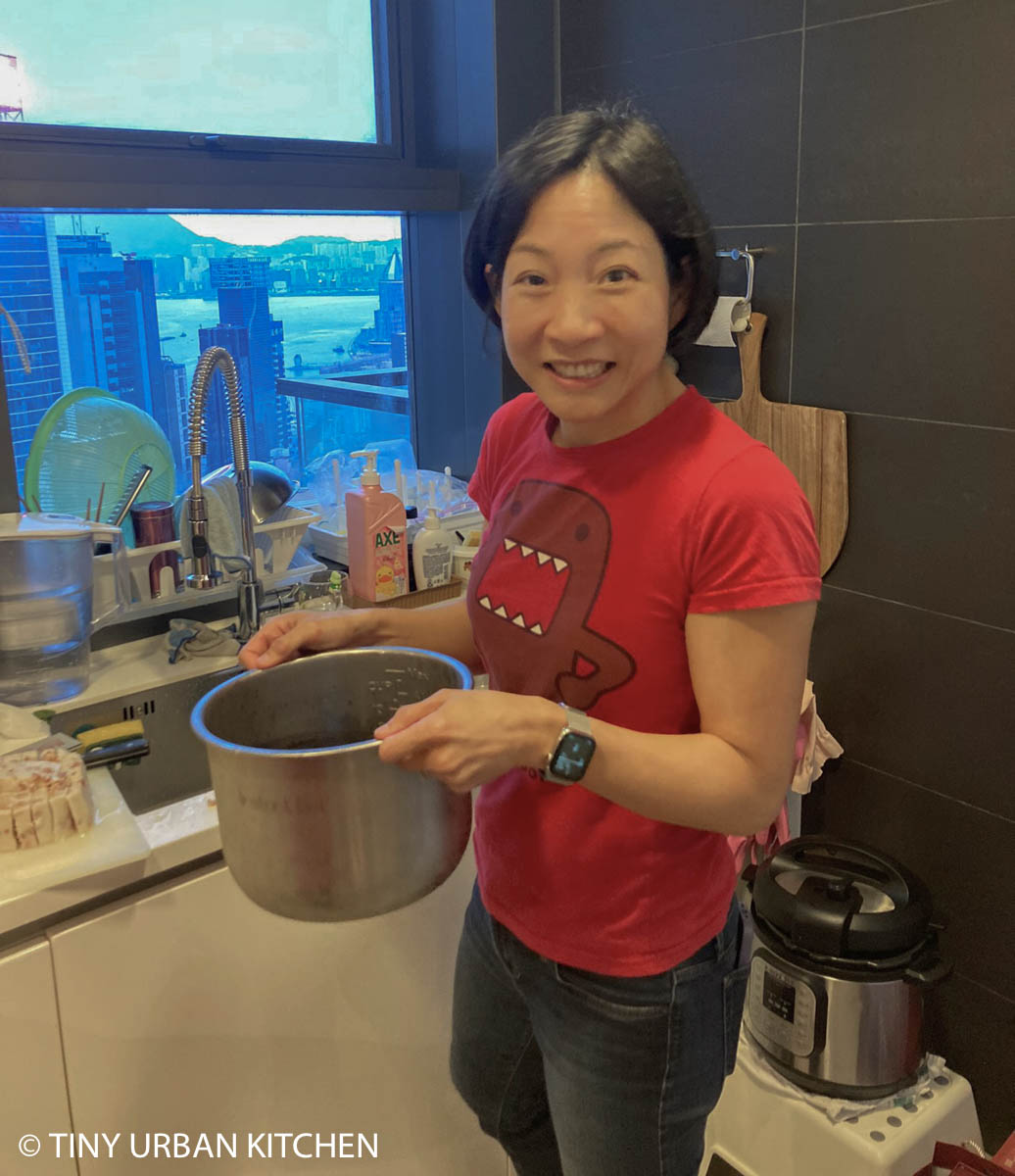
For dessert we ate Mandarin oranges, and had red bean soup with more rice cake (niangao) 年糕. The word for kumquat in Cantonese 金桔 is pronounced “gam1 gat1”. 金 is gold (“gam1”) and 桔 (gat1) has the same pronunciation as 吉 (gat1) which means good luck.
I have two Instant Pots (a British plug version and a US plug version). They actually both came in handy as I used one to make the red bean soup and the other to make a simple but comforting carrot, corn, and pork bone soup. I never thought I would use both at the same time!
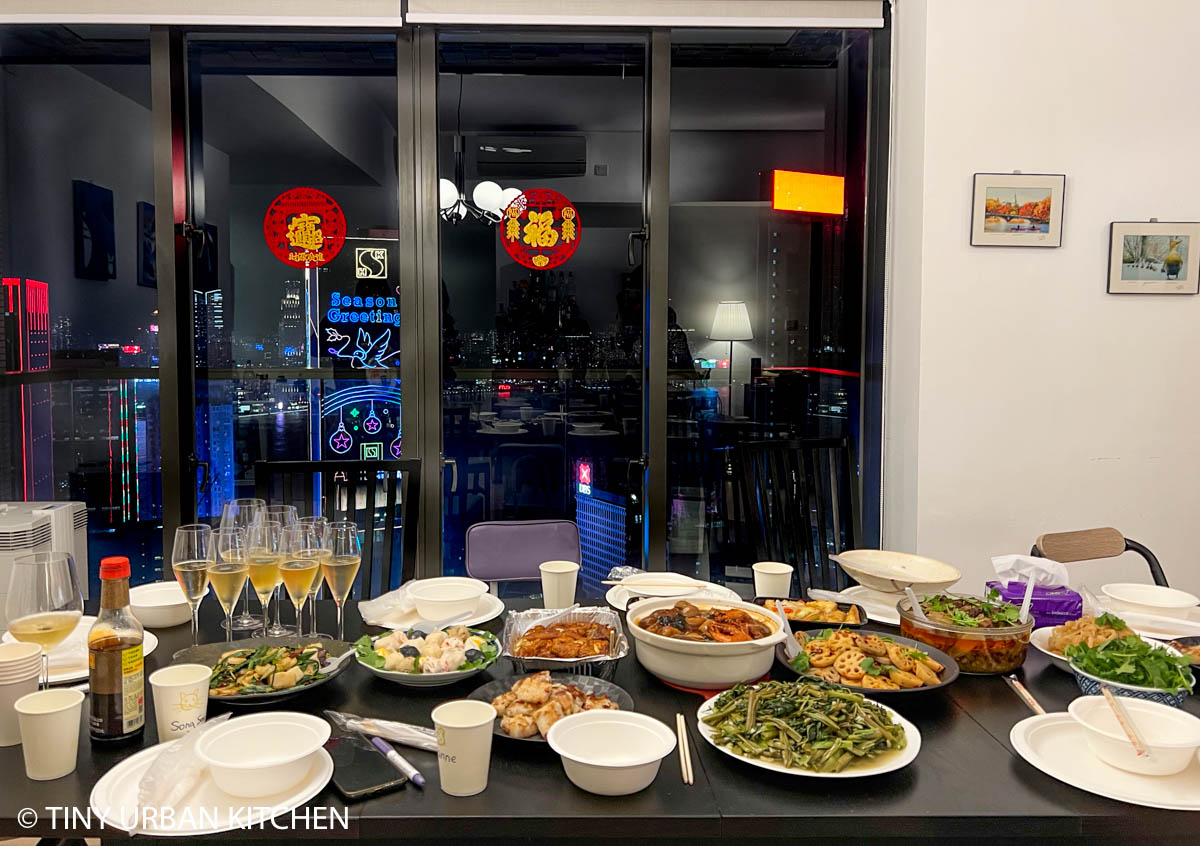
I don't think I've ever enjoyed such a festive, authentic, and traditional Lunar New Years Eve dinner. It was really fun and special.
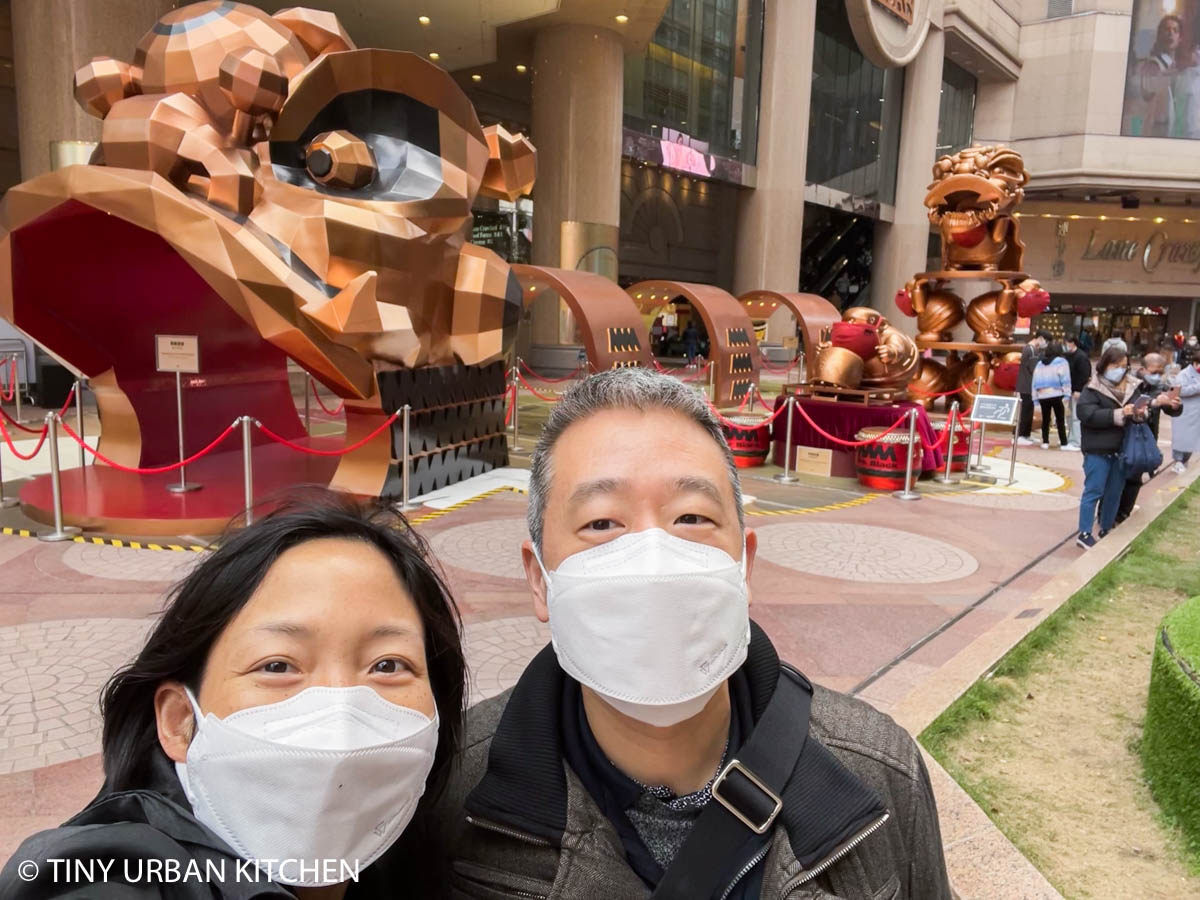
The entire Lunar New Year holiday spans 15 days. During this time Hong Kong is filled with festive decoration. People hand out red envelopes all around, and it's natural to wish others a happy new year when you see them.
This year has been a bit different because Hong Kong started to see a massive rise in Covid cases right after the start of the new year (likely due to increased gatherings during the holiday). As a result, the second week of the extended Chinese New Year holiday has felt a bit muted. Public gatherings are restricted to two people only. Restaurants close at 6PM and are limited to two diners per table. Many flights to Hong Kong are still banned. Many people (us included) are working from home. They are even encouraging people not to hand out physical red envelopes (laisee), but instead use digital laisee 紅包 🧧。
Despite the muted festivities, we still feel really blessed to be able to enjoy such a culturally rich Lunar New Year this year. We're very thankful to the many friends who helped us brainstorm, plan, prepare, and experience this very traditional holiday.
Happy New Year of the Tiger!









